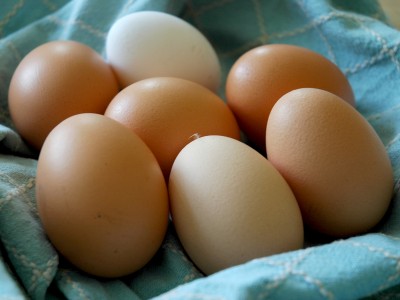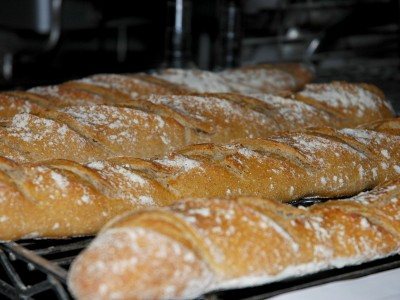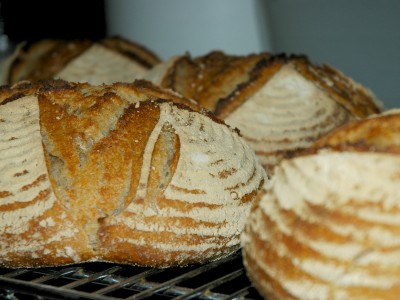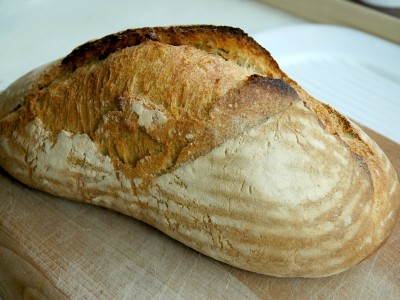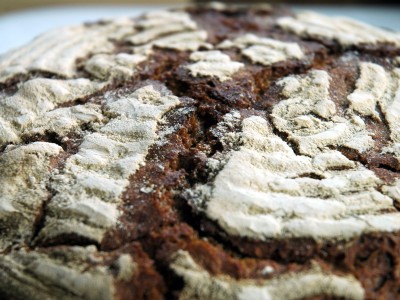Weekly meal plan: the lots of quick meals week
As I mentioned last week, this week is show week for my drama classes – we had our first dress rehearsal last night and … it’s going to be a long week. I didn’t get as much put in the freezer last week as I hoped either – and our store cupboard supplies are low because we’ve not been to the supermarket for a big shop in … a month?. John and I have also both woken up this morning with sore throats/swollen glands. It’s going to be a very long week.
Monday lunch – pastrami with toasted sourdough bread and pickles
Monday dinner – pasta with John’s pasta sauce (from the freezer), and salad
Tuesday lunch – either scrambled eggs or beans on toast
Tuesday dinner – chilli-glazed pork chops with carrots & green beans
Wednesday lunch – chicken pieces & salad and bread
Wednesday dinner – pasta with tuna, sweetcorn, olives & chillis before I go or possibly curry (from the freezer) after I return
Thursday lunch – some sort of dal and rice (pindi channa if I can find my recipe; something with lentils if I can’t)
Thursday dinner – boiled eggs & soldiers :)
Friday lunch – leftover dal & rice
Friday dinner – possibly, probably, something on the way home from the theatre
Saturday brunch – fry-up, hells yeah.
Saturday dinner – pizza at aftershow party
No omelettes allowed: my five favourite recipes to use up lots of eggs
According to our all knowing spreadsheet, we had 200 eggs from our hens last month. 200 eggs!
Those two hundred eggs equal an average 6.45 eggs a day from the seven girls – not enough to bother selling them at the garden gate but more than enough to keep us going! Our friends and family rarely leave without a box in their hand but we still have a good amount to get through ourselves.
John has scrambled eggs for breakfast roughly every other day, we have egg mayo lunches quite frequently and omelettes (usually either Spanish tortilla or frittatas) feature on our meal plans at least once a week – but we like to use them up in more creative, less obviously eggy ways too.
Here are my five favourite ways to use up a lot of eggs for when you’re bored of omelettes :)
1) Fresh egg pasta – one to two eggs per serving
Despite having a pasta machine for a few years now (a re-gift from John’s mum), we only made pasta for the first time last autumn – it was a lot of fun though and we didn’t know why we’d waited so long! The egg gives the pasta a lovely richness so it only needs the lightest dressing – no heavy ragus need apply. It’s perfect for having with mushrooms sautéed with garlic & chilli, with a little grated parmasan/pecorino & pepper on top. At this time of year, tangles of tagiatelle and ribbons of very lightly cooked wild garlic would toss together beautifully — mmm, am feeling hungry at the thought of it!
2) Chocolate-mocha mousse – an egg per serving
I wrote up this recipe a few weeks ago because I *had* to share. It’s possibly the richest dessert I’ve ever eaten and, trust me, I’ve eaten plenty of rich desserts in my time. Starting with chocolate is a bit of a cheat but makes it really easy to make – about ten minutes melting, whisking and folding in, then a couple of hours to chill in the fridge. As I say in the recipe, if I was served this at a restaurant with a biscotti and a sprinkling of icing sugar, I’d expect to pay a fiver for it.
3) Flourless chocolate tart – an egg per serving
Ok, so this is pretty much the same as the last one, just baked but when things are this yummy, pedantry shouldn’t enter into it. It was apparently one of the hottest desserts around a few years ago, when everyone was obsessed about cutting back on their wheat, so there are lots of recipes around for it – from the very simple to more flavoured ones with almonds, coffee or alcohol – or all three. I like this recipe for the same reason as I like the mousse – it’s a fantastic, luxurious dessert made some simple, basic ingredients – stuff we’re likely to have in.
(And while I was looking for different recipes for it, I found this equally egg heavy recipe for a chocolate cake that uses BEANS instead of flour. Apparently that too is delicious so it’ll go on my to try list…)
4) Lemon curd – 5 eggs to 2.5lbs-3lbs of finished curd
Another one that is surprisingly easy to make. It took me longer to squeeze & zest the lemons than it did to make the rest of the curd – it’s ten minutes on the stove, max and it’s LOVELY.
5) Pickled eggs – 8-12 eggs — as many as you can fit in your jar
I’m not interested in freezing eggs at the moment because we’ve got such a steady supply of fresh that we’d never use the frozen ones – but pickled ones are a different thing entirely. It’s not that we’re pickling them to preserve them as regular eggs – we’re transforming them into a whole new thing. A lovely, sharp tasty thing. By the end of the jar, they’re almost eye-wateringly sharp but we had some with cheese and our sourdough bread for lunch yesterday and the chunks were a lovely, tangy highlight.
If you’ve got chickens, what do you do with all the eggs? Anyone got any favourite egg recipes I should try?
Read MoreMarch – end of month review
March has been a rather expensive and stressful month as we’ve been having our bathroom fitted and a ridiculous amount of things went wrong. But at the same time, we’ve also learnt some new skills and had some lovely Spring days – just how fantastic is it that the world is turning green again?
Goals in 2011 progress
As in February, I’m working towards a few goals if not anywhere near completing them yet. I’ve sown a lot of seeds for veg – unfortunately lost a lot of baby seedlings to damping off and other bad propagator management but I’m learning all the time. We should have our first fully homegrown 2011 salad in the next few weeks.
I’ve not been baking that much but the four loaves we made each on our baking course at the weekend keep up my average ;) They were sourdough loaves and we also now have starters from them – not quite growing one from scratch but I’ll be satisfied if I can keep that alive and bake from it.
We’ve also been on a screenprinting course – which isn’t one of the simple living goals mentioned here but is on my personal goals list – and enjoyed it a lot. We’re booked in for another session the week after next and I’ve already got a few things worked out that I’d like to print.
Buy less than 12 items of clothing in 2011
Even though I thought I’d cave this month, my tally is still at zero. I have been looking at things online but nothing has wowed me enough for me to get out my credit card. I did add some things to basket a couple of weeks ago but deliberately left it overnight to see how I felt about them in the morning – and in the morning, I was indifferent. I quite like that.
I think a Spring jacket may break my embargo – my short woolly swing coat is a little too warm at the moment but my hoodie is at the dog-walking stage of its lifecycle. We’ll see.
One other thing: one day, while putting away laundry, I sorted through all the t-shirts/tops I have in my chest of drawers. I didn’t get rid of anything, just tidied into related piles and refolded – I rediscovered a few tops which got looked over in the usual heap format of my drawers. Shopping your own wardrobe/drawers rules!
Growing stuff and the chickens
As I mentioned above, the growing stuff thing is going well-ish. I might live to regret it if there is a cold spell in the next few weeks but I planted out my broad bean seedlings yesterday. I’ve got two lots of potatoes sown in “bags”. My tomato seedlings – the ones that survived the Great Damping Off Crisis of 2011 – are beautifully leafy. My cucumbers and pumpkins look green and luscious. The chillis & peppers are growing slowly but looking good. The radish seedlings numerous, the cauliflowers hanging in there and various lettuce & salad leaves at varying stages of sprouting but looking very promising. On the fruit front, John B gave us some jostaberry canes so they’re in the ground too now. All our other berry bushes & fruit trees are budding/leafing well (the photo above is one of the apple trees), and the two strawberry runners that I thought had died have proved me wrong. Basically, it’s all go in the garden, greenhouse & propagator!
The chickens are doing well – they’ve met our nephew on a couple of occasions (our 4 year old niece comes to visit sometimes too, and John’s young cousins, but at 13 months old, the ‘phew is their youngest visitor to date) and got an new layer of woodchips to scratch around in. In return, they’ve given us a magnificent 200 eggs exactly (well, exact at this point – if I go down later, there may be another one). That’s an average of 6.45 a day, at a rough average of 8p per egg in consumables (£12 ish of food, and about £4 for straw, shavings, seed treats & powders).
Read MoreAdventures in frugal vertical gardening – ideas for planters?
Got a dull flat wall I’d like to “vertical garden” up – need to make/acquire/modify some planters. Any suggestions? Need to be cheap/free :)
I asked that grammatically horrific question on Twitter last Thursday but I thought I’d bring it over here as well to catch non-Twitterers but also to put together some of my ideas/questions.
I’ve actually got two flat walls that would be perfect for wall planters and the like but I’m going to focus on the bigger one first. It’s on the greenhouse level of our garden and has a super narrow (about a foot wide) bed at the bottom of it. I intended to grow beans and peas in the bed last year – trained up the wall – but the slugs put an end to that. Courgettes grew quite happily in it after all the peas got eaten but I think from this year onwards, it’ll work better as shrubby-herb bed (especially as it means I don’t have to put those elsewhere now). Since they won’t climb up, there will be a lot of vertical height going spare. More of an issue for when I reach the planting stage but if anyone’s interest, the wall is east facing, receiving sun until about 1-2pm.
So what can I use for planters? There are lots of different planters available to buy – in all sorts of materials – but they seem to fall into a few general categories:
- shelves – from basic wood to fancy wrought iron curves & cages. Even the flatter, plainer shelves, usually have a rim or lip around the sides so pots don’t get blown out or down. For use with separate pots.
- window boxes – wall mounted troughs which, unlike the shelves, are planted into directly.
- half moon wall planters – semi-circular troughs a cross between window boxes and hanging baskets.
- hanging baskets – suspended away from the wall on a strong bracket or a hook. A few levels can be hung together like rainchains.
- “floating” pots – either like this lead one from Gardeners World, this integrated hooks/trellis arrangement or just pots on hooks. Some, like the lead one, have pots fixed in position, whereas others can be moved around – for example, pots with individual hooks attached can be put anywhere on a trellis.
- bags – suspended bags filled with soil, with holes cut into the (randomly) bag for the plants. Felt pocket hangers are a cross between the floating pots and these bags. Some bags (like better feather duvets) are divided into different compartments so the soil doesn’t all slump to the bottom – but this does restrict root growth.
- complex living wall systems – patented growing secrets! Lots of different designs/methods – some of them seem to be grid structures filled with compost, others structured bags behind trellis type things, others still who knows? possibly pure magic.
I certainly can’t afford a fancy living wall system but even filling the space with purpose-built troughs/window boxes, wall planters and hanging baskets would cost more than I’d like. (I do have some that I can repurpose from elsewhere in the garden but I’ll have to replace those containers somehow or I won’t be adding to my overall growing space. Some are also self-watering which would be beneficial). As always, I’ll keep an eye out on eBay/Freegle for giveaways but in the meantime, I guess I need to get making…
Read MoreSourdough breadmaking course with the Handmade Bakery
Yesterday John and I went on a baking course run by the Handmade Bakery.
We met Dan & Johanna, who run the bakery and the course, on a wild food walk in May last year. At the end of the walk, we ate their bread alongside the crayfish we’d caught, our foraged greens & battered sweet cicely dusted with icing sugar. Next to the river at Barden, just north of Bolton Abbey, in the glorious sunshine, the meal was a delight. It was also the first time we’d tried any type of proper slow fermented bread and it’s what inspired us to make our own slow rise bread. Before and since then though, I’d failed to manage to maintain a sourdough starter so I saw the benefit of doing a course with them to learn more about that sort of thing so in July last year, I booked us on the next available sourdough course (their “rising ambition” course – now seems to have been replaced by a “wild yeast” one) – yesterday. It was well worth the wait.
We arrived to tea, coffee & delicious pulla, specifically cinnamon rolls called korvapuusti. But we didn’t get to sit around for too long – not when there was baking to be done!
Over the course of the day, we made four loaves each – a round boule & baguette from a slow fermented wheat dough (pain de campagne) they’d mixed the day before (for us to learn about shaping), a sourdough baton made from a build (a thick starter), and a free-standing 100% rye sourdough with figs & aniseed.
The pain de campagne allowed us to learn different shaping techniques – demystifying baguettes, although I’m going to French breadmaking hell because I did nine gashes on my baguette rather than seven. John & I both went for cross-shaped slashes on the top of our boules (John’s is the one in focus below – he didn’t slash deeply enough at first) but other people went for two straight slashes and another four small ones around the edges — they all looked very pretty and we’ll definitely try some variations in the future.
The sourdough from a build allowed us to practise mixing & kneading without having to wait 12 hours – they mixed up the build, using a rye starter, the previous day. After sufficient rising, most people folded in additional flavourings – either olive, lemon & thyme or walnut & raisin – but I left my plain so we could see the contrast. Presumably because it didn’t have the extra bits in it weighing it down, mine rose beautifully.
Shaping them for the baton (proving in an oblong proving bowl then baked free-standing) was another good skill to learn – especially as we bought an oblong proving bowl to use at home.
After making a 100% wheat bread using a wheat starter (the pain de campagne) and a wheat bread with a rye starter (the sourdough from a rye build), we then made a 100% rye bread from a rye starter. It felt a lot more akin to making a cake or soda bread as it wasn’t kneaded – more mixed together and shaped like soggy clay – but it was left to rise in the same was as normal. It was baked free-standing and ended up a lot flatter than the boule, even though they’d been shaped in the same round proving bowls — this is apparently expected and not us being rubbish :)
We haven’t tried the 100% rye loaves yet – we were advised to leave them overnight before trying them as the close crumb can be “gummy” on the first day – but we’ve tried the pain de campagne and John’s had his sourdough with raisin & walnuts. The slow fermented pain de campagne is much more noticeably sour compared to the one made from build. Both are quite chewy with tough crusts – not disagreeably so but certainly not the fluffy barely-there bread that passes for “artisan” bread in supermarkets. In fact, we found both facets reassuring as our slow rise bread has similar qualities and now we know that’s not a sign that we’re doing something wrong.
In addition to the eight (!) loaves we brought home between us (two were very quickly gifted to John’s mum & dad, who had Lily sat during the day), we were also given portions of starter so we can make our own sourdough. The wheat leaven, which is apparently a little harder to maintain so we’re not sure we’ll be able to keep ours going, was started in River Cottage in 2005 but the rye leaven came to the Handmade Bakery via the Phoenix Bakery in Weymouth but apparently originated in Russia in the 1970s so is older than we are :)
All in all, the day wasn’t cheap but was well worth it in our opinion – we learnt new skills and gained so much bready knowledge – Dan & Johanna are very knowledgeable and very keen to share. They also provided a lovely lunch – an Iranian minestrone soup with local cheese and their bread (naturally), followed by chocolate cake made from waste sourdough leaven. We’d heartily recommend it.
Read More


